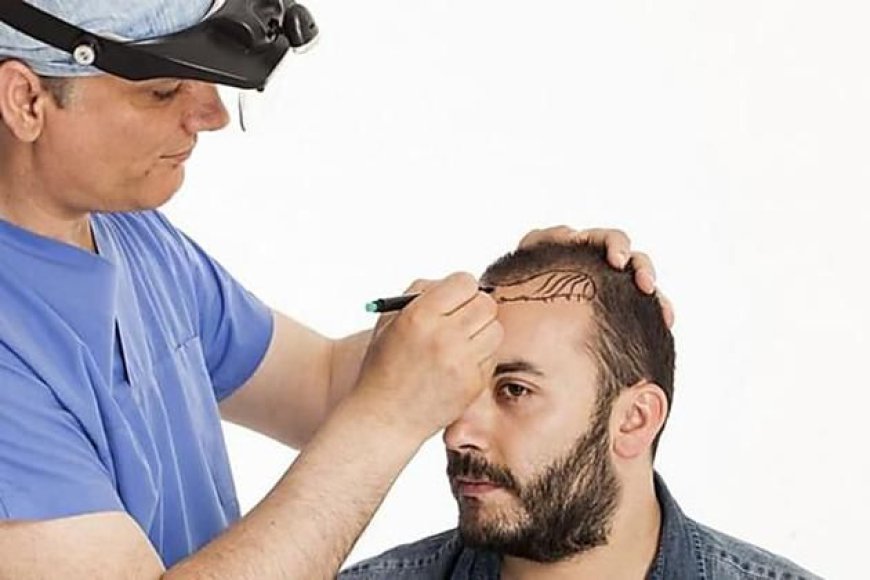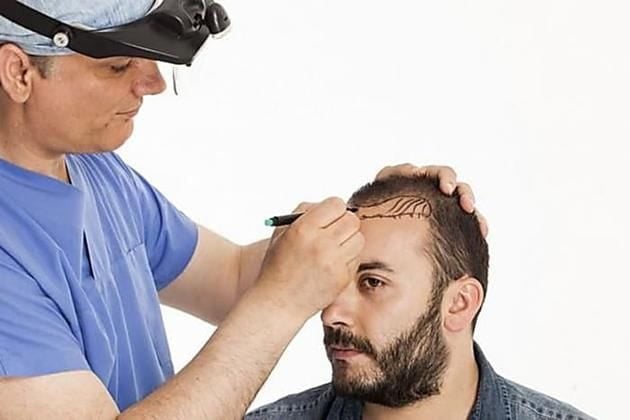Investigating Non-Surgical Alternatives to Hair Transplants
offering a range of benefits such as minimal downtime, lower costs, and fewer risks compared to traditional hair transplant زراعة الشعر procedures.

Hair loss is a common issue that affects millions of people worldwide. While surgical hair transplants have long been the go-to solution for hair restoration, many individuals are now seeking non-surgical alternatives to address their hair thinning or balding concerns. Non-surgical options provide an effective and less invasive way to combat hair loss, offering a range of benefits such as minimal downtime, lower costs, and fewer risks compared to traditional hair transplant زراعة الشعر procedures.
In this blog, we will explore some of the most popular non-surgical hair restoration treatments, how they work, their benefits, and what to consider when choosing between these alternatives and surgical hair transplants.
1. Platelet-Rich Plasma (PRP) Therapy
PRP therapy has become one of the leading non-surgical treatments for hair restoration. It involves using a patient’s own blood to stimulate hair growth. The process starts with a blood draw, from which platelets and growth factors are extracted. These are then injected into the scalp in areas of hair thinning or baldness.
How It Works:
Platelet-rich plasma contains growth factors that can stimulate hair follicles, enhance blood flow to the scalp, and promote tissue regeneration. When injected into the scalp, PRP helps activate dormant hair follicles, encouraging them to enter the growth phase. The treatment is typically done in multiple sessions, with noticeable results appearing after a few months.
Benefits:
- Natural Approach: PRP uses your own blood, which reduces the risk of allergic reactions or infections.
- Minimal Downtime: The procedure involves little to no recovery time, and patients can resume their normal activities immediately after treatment.
- Non-invasive: PRP is a needle-based procedure, not requiring any surgical incisions.
Considerations:
- PRP is not suitable for everyone, particularly those with certain blood disorders or conditions that affect platelet function.
- Results vary from person to person, and multiple sessions may be required to achieve noticeable improvements.
2. Low-Level Laser Therapy (LLLT)
Low-level laser therapy (LLLT), also known as red light therapy, is another non-surgical option that has gained popularity for promoting hair growth. It involves using laser light to stimulate hair follicles and increase blood circulation to the scalp.
How It Works:
LLLT uses light energy in the red or near-infrared spectrum to stimulate the mitochondria in the scalp cells. This process is believed to increase energy production in the cells, promoting hair follicle activity and improving hair growth. LLLT can be performed using handheld devices, laser combs, or in-office treatments.
Benefits:
- Non-invasive and Painless: LLLT is a non-surgical and painless treatment, making it appealing for people who want a low-risk option.
- Convenient: Some devices allow individuals to use the therapy at home, providing a convenient way to improve hair growth on their own time.
- FDA-cleared: LLLT devices have been FDA-cleared for the treatment of hair loss in both men and women.
Considerations:
- LLLT requires consistent use over a prolonged period for noticeable results. It can take several months of regular treatments to see improvements.
- Results may vary, and some patients may experience minimal to no improvement.
- The treatment is more effective for individuals with early-stage hair loss rather than severe balding.
3. Topical Treatments (Minoxidil and Finasteride)
Topical treatments like minoxidil (Rogaine) and oral medications like finasteride (Propecia) are well-known non-surgical options for treating hair loss. These treatments work in different ways but can both help slow down hair loss and promote new hair growth.
How They Work:
- Minoxidil: This topical solution is applied directly to the scalp, and it is believed to work by improving blood flow to hair follicles and stimulating hair growth. It is available over-the-counter and is FDA-approved for treating male and female pattern baldness.
- Finasteride: This prescription pill works by blocking the hormone dihydrotestosterone (DHT), which is responsible for shrinking hair follicles in those with androgenic alopecia (pattern baldness). Reducing DHT levels can help slow hair loss and promote hair growth.
Benefits:
- Widely Available: Both minoxidil and finasteride are readily accessible and relatively affordable.
- Easy to Use: Minoxidil is easy to apply at home, and finasteride is taken as a daily pill.
- Effective for Many Users: Both treatments can be effective at slowing hair loss and stimulating new growth, particularly for individuals with early to moderate hair thinning.
Considerations:
- Continuous Use Required: Both treatments require long-term use to maintain results. If stopped, hair loss may resume.
- Side Effects: Finasteride may cause sexual side effects such as decreased libido and erectile dysfunction in some users. Minoxidil can cause scalp irritation or unwanted hair growth in other areas, especially in women.
- Results May Vary: Not everyone responds well to these treatments, and results can take several months to become visible.
4. Hair Fibers and Concealers
For individuals looking for a quick, temporary fix, hair fibers and concealers can be an effective non-surgical option. These products are designed to conceal thinning areas of the scalp and provide the appearance of fuller hair.
How It Works:
Hair fibers are typically made from keratin protein and are applied directly to the scalp. They adhere to existing hair strands, creating a fuller, thicker appearance. Concealers are similar products that coat the scalp, camouflaging bald spots and making the hair appear denser.
Benefits:
- Immediate Results: Hair fibers and concealers can provide instant coverage for thinning or balding areas, making them a great option for special events or everyday use.
- Affordable: These products are generally less expensive than medical treatments or hair transplants.
- Non-invasive: There’s no need for surgery or needles, making them an easy option for people looking to improve their appearance without any risk.
Considerations:
- Temporary Solution: These products do not promote hair growth; they only offer a cosmetic solution for thinning hair.
- Maintenance Required: Hair fibers and concealers need to be reapplied regularly, and they may require careful attention to avoid clumping or visible lines of application.
5. Scalp Micropigmentation (SMP)
Scalp micropigmentation (SMP) is a non-surgical procedure that involves applying tiny, tattoo-like dots to the scalp to mimic the appearance of hair follicles. It creates the illusion of a full, thick head of hair by filling in bald spots and thinning areas.
How It Works:
SMP involves the use of specialized equipment and pigments to apply dots to the scalp that resemble the natural hair follicles. The treatment is customizable based on the individual’s hair color, scalp tone, and desired look.
Benefits:
- Instant Results: SMP provides immediate results, with patients leaving the clinic with a fuller-looking scalp.
- Long-lasting: Unlike hair fibers, SMP is a semi-permanent solution that lasts for several years with proper care.
- Non-invasive: It doesn’t require any surgery or downtime, making it an appealing choice for individuals looking for a low-risk option.
Considerations:
- Cosmetic: SMP doesn’t promote actual hair growth; it only creates the illusion of hair.
- Fading Over Time: While SMP is long-lasting, the pigment can fade over time, requiring touch-ups to maintain the desired look.
Conclusion
Non-surgical hair restoration options offer a wide range of choices for individuals looking to address hair loss without undergoing a full hair transplant procedure. From PRP therapy and laser treatments to medications and cosmetic solutions like hair fibers and scalp micropigmentation, these alternatives provide flexibility, lower costs, and minimal risks.

 saroosh
saroosh 